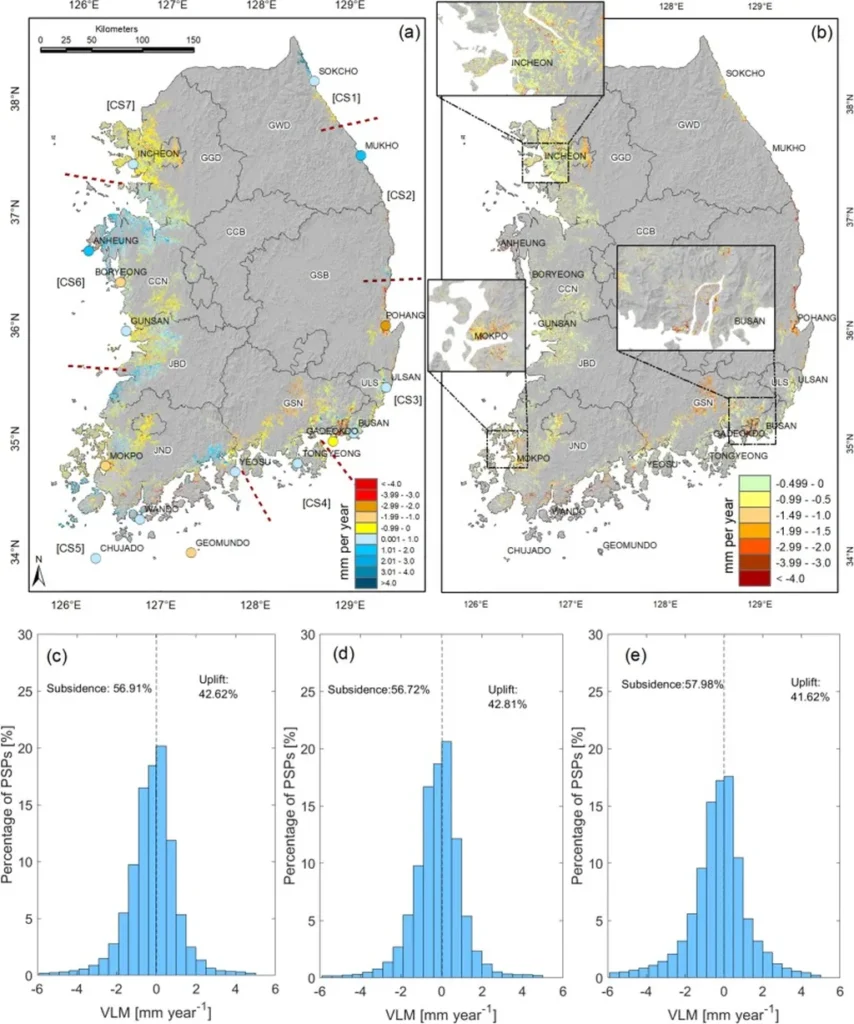In the bustling coastal city of Mokpo, South Korea, where 70% of urban and port infrastructure rests on reclaimed land, a silent threat lurks beneath the surface. Uneven subsidence, caused by the consolidation of soft marine deposits, poses significant risks to the stability of linear urban infrastructure such as roads and railways. To address this critical issue, a team of researchers led by WoonSeong Jeong from the Department of Architectural Engineering at Chungbuk National University has employed advanced satellite technology to monitor and analyze the deformation of these vital structures.
Using the Persistent Scatterer Interferometry (PSInSAR) technique, the researchers analyzed 79 Sentinel-1A SLC ascending-orbit datasets spanning from 2017 to 2023. This method allowed them to quantify vertical land motion (VLM) with remarkable precision. The results revealed settlement rates ranging from -12.36 to 4.44 mm/year, with an average of -1.50 mm/year across 1869 persistent scatterers located along major roads and railways.
“These findings highlight the persistent and spatially variable subsidence observed in Mokpo,” Jeong explained. “The deep marine clays beneath the reclaimed zones have low permeability and high compressibility, leading to slow pore-pressure dissipation and prolonged consolidation under sustained loading.”
To interpret the underlying causes of this deformation, the team conducted a Casagrande plasticity analysis of subsurface materials. They also employed spatial pattern analysis using Anselin Local Moran’s I to identify statistically significant clusters and outliers of VLM, delineating critical infrastructure segments where concentrated settlement poses heightened risks to transportation stability.
One of the most compelling aspects of this research is the application of a hyperbolic settlement model to anticipate nonlinear consolidation trends at vulnerable sites. This model predicts persistent subsidence through 2030, providing valuable insights for future planning and mitigation strategies.
“Our findings underscore the urgent need for proactive monitoring, targeted soil improvement, structural reinforcement, and integrated InSAR-GNSS monitoring frameworks,” Jeong emphasized. “These measures are essential to ensure the structural integrity of road and railway infrastructure and to support sustainable urban development in reclaimed coastal cities worldwide.”
The implications of this research extend beyond Mokpo, offering critical insights for other coastal cities built on reclaimed land. By understanding the settlement dynamics and vulnerabilities of linear urban infrastructure, urban planners, engineers, and policymakers can make informed decisions to mitigate risks and ensure the safety and reliability of these vital structures.
This groundbreaking study, published in the journal Buildings (translated to ‘건축물’ in Korean), sheds light on the complexities of urban development in coastal areas and provides a roadmap for future research and practical applications. As coastal cities continue to grow and face the challenges of climate change and rising sea levels, the insights gained from this research will be invaluable in shaping resilient and sustainable urban environments.
In the words of Jeong, “This research is not just about understanding the past and present; it’s about preparing for the future. By leveraging advanced technologies and data-driven approaches, we can build safer, more resilient cities that can withstand the test of time.”

